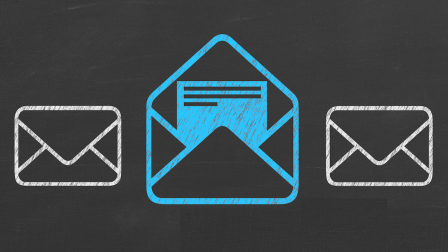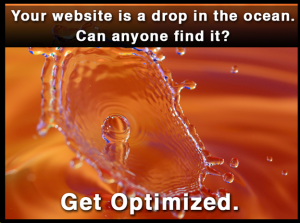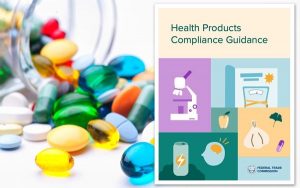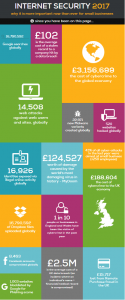You only get one chance to make a first impression, so you’d better make it count! Columnist Daniel Faggella provides tips for crafting your initial email autoresponder.

Email autoresponders are one of the most powerful tools in your marketing arsenal; you can literally write these messages once and put them to work for your business, day and night.
Just like any aspect of marketing, there are some limitations to conventional autoresponders. If you don’t tailor your emails to address these limitations, your sales funnel likely won’t convert many subscribers. Furthermore, if your prospects don’t read your first email, they will seldom open future messages.
Today, I’m going to walk you step by step through how to craft your initial email to maximize engagement with your first autoresponder (and beyond).
A simple first subject line
Before you start writing your first email, you need to ensure that your subject line directly ties to the website on which the original content is embedded. Your email should mention the free content you’re delivering, along with the name of your brand.
Let’s use an example from the dating and relationships niche. Assume that someone opted in for a lead offer titled, “7 Tips To Creating Your Online Dating Profile.”
The subject line of your first email should be clear and concise, serve as an introduction to your prospect, and not contain any excessive punctuation. A good initial subject line might be, “Welcome. Your complimentary dating report from [INSERT BRAND NAME].” Notice that this subject line is straightforward. This will increase the open rate and eliminate any ambiguity that your prospects may have.
A poor example of a subject line would be, “FREE Dating Profile Report Click Here!!” Using capital letters, exclamation marks, and explicit calls-to-action on the first email can be perceived as too sales-oriented and aggressive — and could potentially get your brand labeled as spam from the start.
Considering that your first email will highlight your content and brand name, it will also typically contain more text. A typical subject line should not exceed 30 characters; anything longer can appear redundant to new leads.
Deliver your content immediately
In the opening paragraph of your first email, you should provide the lead offer that you presented on your landing page. While this sounds intuitive, you’d be surprised how many marketers miss this step.
Don’t wait for the second paragraph or the end of the email to give your subscribers what you promised. If for some reason you can’t deliver the lead offer in the first paragraph, make sure to do so in the first half of the email. Giving your prospects exactly what they opted in for will garner the trust of your subscribers and set a positive precedent for future email engagement.
Optimizing your body copy
Within the rest of your email body copy, you want to reiterate the core value proposition that made your prospect subscribe to your list in the first place. Doing so will position your brand to squeeze more opens and clicks out of future emails.
Asking one or more of the following questions is one strategy that can help you articulate the unique marketing hook of your products and services:
- What are the specific reasons that your subscribers joined your email list?
- How do you provide value differently from other authority companies in your niche?
- What are the unique benefits that your customer is looking to experience?
- What are the obstacles that are preventing your target audience from reaching their goals?
- Have you overcome any of these common obstacles?
Once you convey the value proposition of your brand, you want to give your prospects a preview of what they should expect to learn from you. It’s essential to highlight both the short-term and long-term benefits you’ll be delivering in future emails.
Let’s use the fictitious company, “Camping Survival,” as an example. On the home page of their website, they offer a free report titled, “7 Survival Skills To Teach Your Children.” When someone opts in for this PDF, they are educated about a specific set of self-defense tactics; however, Camping Survival also sells a variety of camping gear and apparel on their site.
It’s critical that Camping Survival address this point in the first email of their autoresponder sequence. This will set the proper expectations for new subscribers and potentially pique more interest from those who aren’t necessarily looking to teach survival skills to their children.
“Camping Survival has become known for our cutting-edge survival skills and gear. In the next few months, you’ll discover some of our best self-defense techniques that will teach your children how to combat potential attackers. You’ll also get special discounts on our best survival gear, including knives, backpacks, fishing kits, tents and more.”
For short-term benefits, provide an educational sequence that will deliver immediate results to your prospects. This can be in the form of a free report, video or audio series. In general, you should always give away your best content at the top of your sales funnel. Articulate the short-term benefits your prospects can expect in the body copy of the first email. You can use the following example from Camping Survival as a template:
“Over the next few days, we’re going to be sending you some of our best self-defense techniques. Tomorrow, I’ll show you a quick and easy move that you can use to disarm an attacker carrying a gun. Keep an eye on your inbox, because you won’t want to miss this.”
Addressing the short-term benefits of your core value proposition will increase the engagement levels of your subsequent emails. As a marketer, it’s crucial to set the expectations for your new leads. Be overt about your upcoming content and give your readers a tangible reason to open up the next email.
The postscript of your first email
The postscript (“P.S.”) section of an email may appear subtle, but when leveraged properly, it can increase your credibility and start driving more revenue for your business.
I don’t suggest driving subscribers to a sales page in the “P.S.” section of your initial email. This can appear aggressive to someone interacting with your brand for the first time. Instead, the “P.S.” of your first email should establish your credibility and garner the trust of your list.
In my experience, one of the best ways to do this is by utilizing testimonials. There are a myriad of ways to incorporate testimonials in the footer of your email, including:
- showcasing your best testimonial on a banner image;
- linking to an article that features your best testimonial; and
- linking to a page that showcases all of your client testimonials.
Whenever you link to one of your personal web properties, make sure to “leave the buyer’s door open” to your audience. There will always be a portion of readers that are ready to take the next step in your marketing sequence.
A best-practice strategy is to optimize your websites with banners, popups and direct calls to action that always give your prospects an opportunity to purchase your products and services.
Wrap-up
You have one opportunity to make a first impression. Optimizing all parts of your email — subject line, lead-in, body copy and P.S. — is a smart way to cultivate the trust of fresh subscribers.
Some opinions expressed in this article may be those of a guest author and not necessarily Marketing Land. Staff authors are listed here.
Marketing Land – Internet Marketing News, Strategies & Tips
(48)










